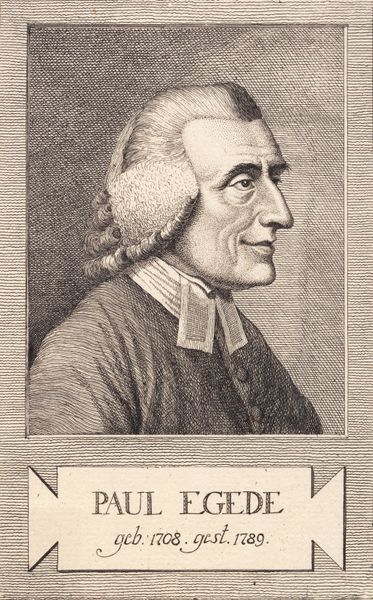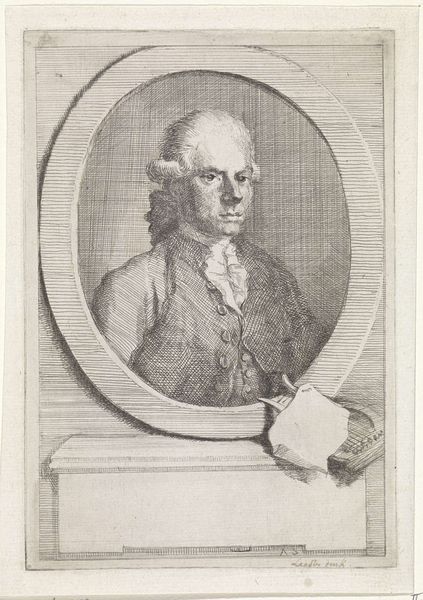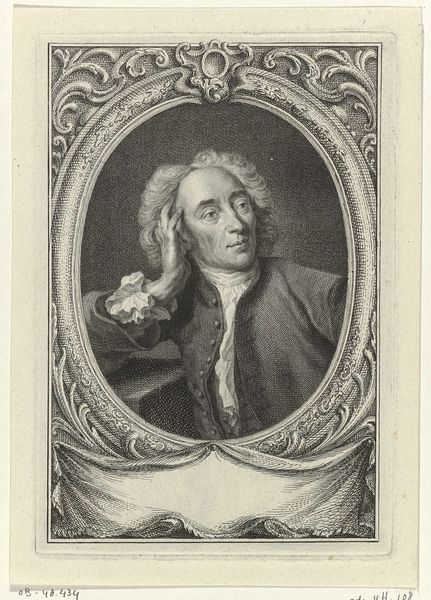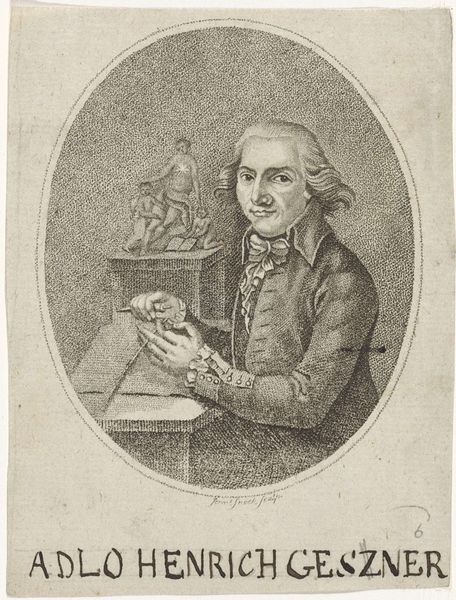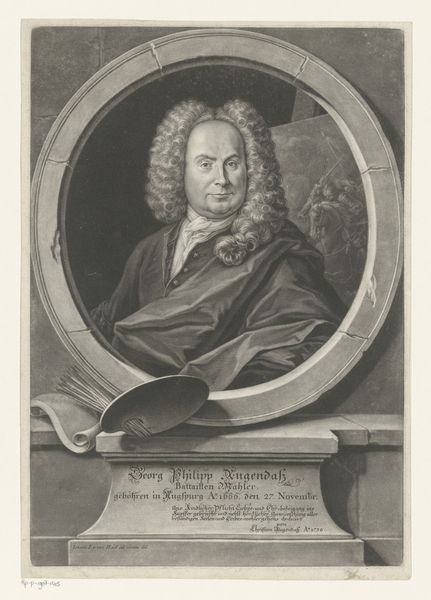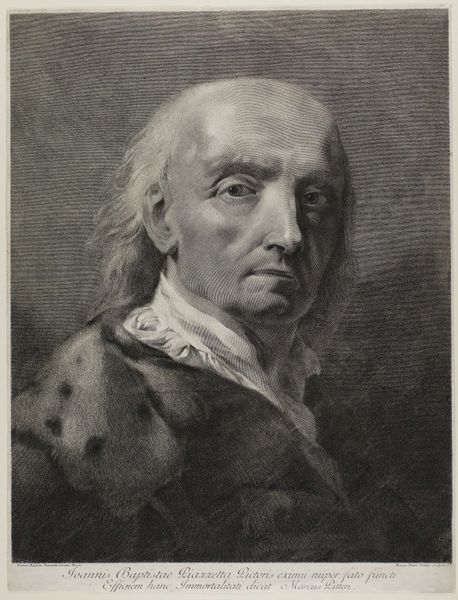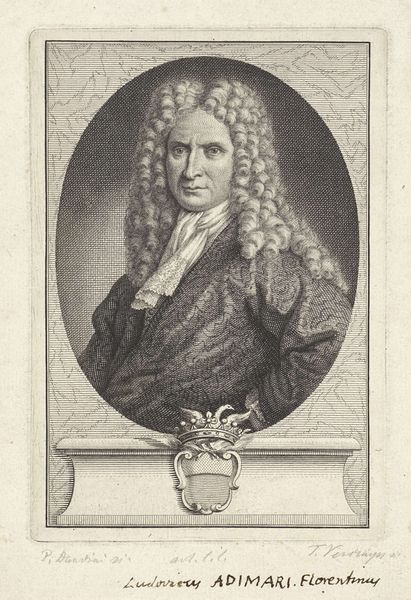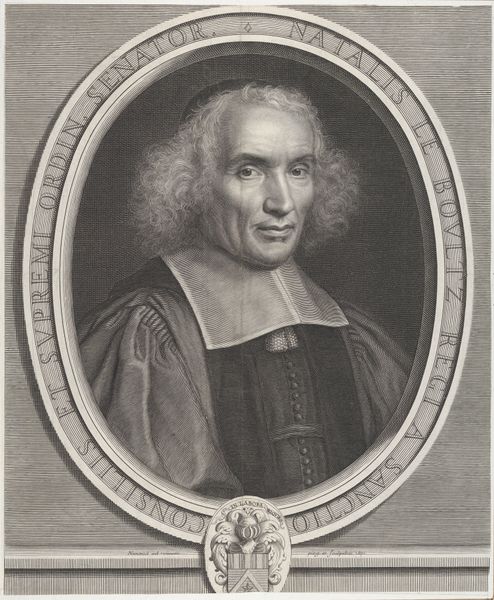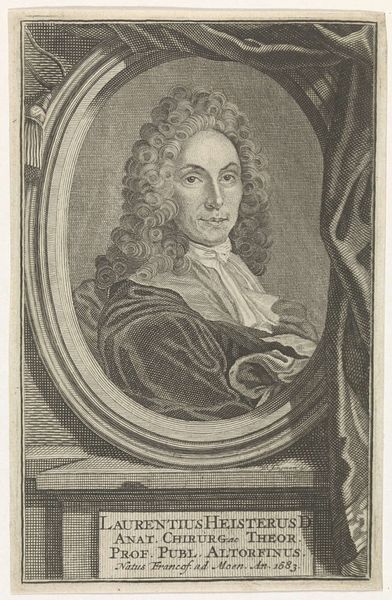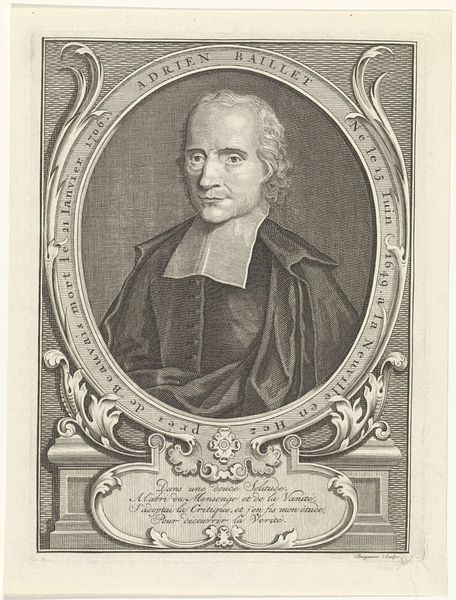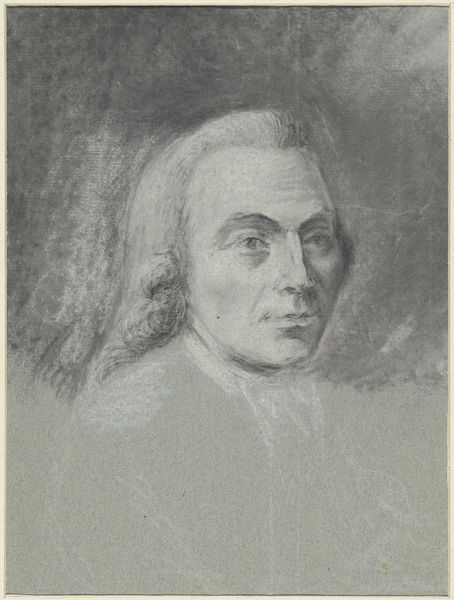
print, engraving
#
portrait
# print
#
portrait drawing
#
engraving
#
realism
Dimensions: 125 mm (height) x 92 mm (width) (plademaal)
Curator: This engraving from 1867, made by A.P. Madsen, portrays Ludvig Holberg, a prominent figure in Danish and Norwegian literature. What strikes you initially about it? Editor: The stark contrasts create a profile that’s surprisingly bold. There’s almost a neoclassical purity to it, wouldn’t you say? The hatching is so precise it renders almost every hair. Curator: Absolutely. The realism is arresting, though engravings inherently offer a heightened drama due to their binary nature. The symbols he wears and the look in his eye also suggest his identity within that time period. What I mean by that is that he is both a person and an idea. Editor: True, the details of his clothing and that rather impressive wig definitely place him within a certain era and social standing. But look closely at the engraving itself. How the fine lines are manipulated to create volume and shadow! See, for example, how the engraver articulates the curvature of the nose or the set of the jaw. It is just fabulous line work. The way the shading suggests not just form but also the texture of his jacket, it’s remarkable for this period. Curator: He appears every bit the Enlightenment figure –rational, distinguished, with an inner life suggested by the gaze. Holberg represents the rise of reason, natural law, and individual merit. It is like it’s not simply his portrait but a mirror reflecting the Enlightenment's ideals. Editor: It’s a compelling work, capturing something essential about both the sitter and the era, as you say. The stark black and white only enhance that timeless feel, that distilled essence. The method, the composition, even that subtle interplay of light, seems a perfect vehicle for conveying his contribution and identity. Curator: Indeed. I'm reminded that engravings are never just replications; they're interpretations. I appreciate the idea that this portrayal of Holberg is an intersection of historical representation and the enduring appeal of enlightenment ideas. Editor: I have a deepened respect for how technique becomes expression in this context, even after this brief analysis. The focus feels justified.
Comments
No comments
Be the first to comment and join the conversation on the ultimate creative platform.
